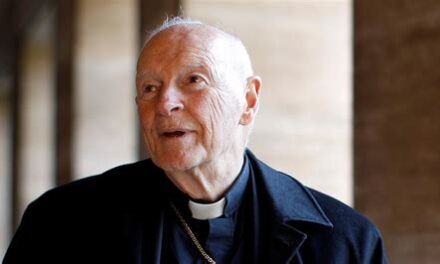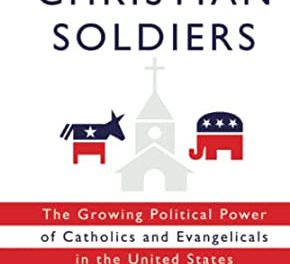- In the previous interview, you told us that after the Vatican reviewed the work of Priests for Life, contradicted the unfair complaints of Bishop Zurek, and asked Cardinal Dolan to clear the good name of you and your ministry after Bishop Zurek had publicly called it into question, the Cardinal failed to do that. What did you do next?
Deal, the next thing we did, which was already underway, was to seek canonical recognition from the Vatican as an international association of the faithful.
We are an international ministry, because our team has traveled to dozens of countries over the years, and Priests for Life works on the ground in over 70 of them. Our focus is, without doubt, the United States, but our presence and support in these other countries is strong, and some of the bishops and Cardinals among our advisors are from other nations.
Now here we need to explain a little bit about “associations.”
If you and your friends gather together and do work for a particular cause, you have a right to do that, and nothing more is needed than the agreement and commitment of you and your friends. But civil law also gives you the option to form a “corporation,” which then has certain rights and responsibilities vis-à-vis the state. But that’s optional, of course. You don’t have to form a corporation.
Church law works in a similar way. Anyone in the Church is free to associate with anyone else to carry out the work of the Gospel, including pro-life work. And Church law gives you the option to form various kinds of entities, some of which are called “associations.” These are “canonical” entities – that is, entities recognized by Church law. Besides associations, there are parishes, dioceses, religious communities, and other entities.
So when Priests for Life was first established, an association was formed under Church law as well as under civil law. In reality, of course, it functioned as one – the same people, the same day to day work. But we were recognized under both civil and canon law.
As time went on, the mission grew and diversified. Responding to the needs of the pro-life movement and the input of those we serve, we formed a whole team of ministry leaders, taking under our wing different efforts like the African-American Outreach led by Evangelist Alveda King, the international outreach led by Marie Smith, and the worldwide Rachel’s Vineyard Ministries, the largest effort of healing after abortion.
Because we always retain a team of legal advisors in both Church law and civil law, we made, along the way, the necessary adjustments to accommodate the reality of the work we were doing and the way we were doing it.
So we came to a point where we had outgrown our original structure under both civil and canon law. The civil law adjustments were easy to make. The adjustments in Church law proved far more complicated.
- Did the Vatican help you and Priests for Life navigate this process of seeking international recognition as an association?
Once we underwent the “Visitation” which I told you about in the previous interview, we were told that we had outgrown the original canonical bylaws under which our canonical recognition had been given, and so needed to update them. This wasn’t a negative, by the way; it was simply an observation of fact, and indeed a positive, because we had grown, we were responding to the needs of the movement, and we were being offered assistance in updating our statutes.
We did receive strong encouragement from some experts in Church law and some Vatican Cardinals. Those who know Church law will recognize the name of Cardinal Velasio de Paolis, a world-renowned expert. In my extensive meeting with him, he made clear that the defense of life is a natural obligation as well as a baptismal obligation, and the fact we had many lay leaders made a lot of sense. He said that Church law asks associations to identify themselves either as being led by the clergy or by lay people. We were mixed. We even had leaders, like Alveda King, who were not even Catholic. All this reflects the reality of the pro-life movement.
We also received encouragement from Cardinal Stanislaw Rylko, President of the Pontifical Council for the Laity. After extensive communications with him, he urged us to seek recognition under his Council for the Laity. He also wrote,
“In our present times there is an urgent need to promote a culture of life and also to undertake direct actions that help protect the life of the weakest, especially the unborn. For that reason the work done by ‘Priests for Life’ deserves the gratitude and support of the whole Church.” – Cardinal Stanislaw Rylko, President, Pontifical Council for the Laity, Vatican City State, June 7, 2011.
So as we continued to work with the Canon lawyers, we were told that we either had to change the makeup of our leadership and the focus of our mission to be more “clerical” or, if we kept our lay leadership, would not be able, as a canonical association, to be called “Priests for Life.” So it was tricky. Our name is “Priests for Life” and that is an asset in which we had invested much and which was universally recognized. But to meet the needs of the pro-life movement, priests and laity need to work together. Our main focus was the work, not the need to be one or another kind of structure under Canon Law.
Neither solution appealed to us, but the benefit of trying to get recognition as some type of international canonical association was that this would provide the work more protection, beyond the politics of the US Catholic hierarchy and the ill will we had experienced from a handful of bishops.
But just as we were going to advance this process to the next step in Rome, the Congregation for Clergy said that it had recently come to light – a surprise even for them – that to get recognition on the international level, a ministry first had to have recognition from the national bishops’ conference.
And when we asked our national bishops’ conference, the USCCB, about this, they said that they were not currently giving any canonical recognition to any national groups!
- Were you given any additional explanation about how or why this new requirement had just come to light?
No, and there was not even any conversation about it. I did at one point ask for the help of the President of the Bishops’ Conference, at that time Archbishop Joseph Kurtz of Louisville, who had on multiple occasions expressed personal encouragement to me for my work.
He wrote to explain that the bishops’ conference did not have any jurisdiction over Priests for Life and was therefore not in a position to either give us any help nor to tell us how to conduct our ministry.
- What then did you decide to do regarding seeking recognition as a canonical association?
We decided to be like the Knights of Columbus, EWTN, and numerous other well-known ministries, who carry out their work without being a “canonical association” at all. This may sound surprising, but neither of those influential Catholic apostolates are a “canonical entity” at all. As I explained above, that is perfectly OK because it’s totally optional. Here is how the Knights of Columbus website explained their position in regard to this.
The Congregation for the Clergy was totally respectful of our freedom in this regard. They indicated in a letter to the bishops that we had made a series of choices over the years as we grew, and that the changes in our structure, and our own decision in this regard, meant that we were not a canonical association any more.
Now it’s easy to get a negative connotation from that. That’s why one of our key advisors and friends, Vatican Cardinal Renato Martino, wrote a letter to our supporters to explain this development.
The Congregation for Clergy also said in their letter that we deserved credit for the excellent work we do on behalf of human life, and that bishops were free, as they had always been, to either collaborate with us or not.
- Did that finally clear up any negative things that were being said about you and Priests for Life?
Well our supporters certainly understood all this clearly and our support continued to grow, as it continues to grow today.
But no, the negative attacks continued from some bishops, including Bishop Zurek. Now he and others started to take the words of the letter from the Congregation for Clergy which said that we were not a “Catholic association” and try to imply that we were not Catholic, or not in union with the Church.
As I explained above, by that logic, neither are EWTN or the Knights of Columbus.
Bishop Zurek, however, tried to have it both ways. He started telling people that we were not under the jurisdiction of the Catholic hierarchy.
One would presume, then, that this means he himself, as a member of the hierarchy, did not have any authority to tell our ministry what to do.
Yet he continued to try to tell us what to do, even going so far as to tell a group in Texas that they should not refer to us as “Priests for Life” but rather as “Priests for Life, Inc.” – emphasizing the distinction that we were a civil corporation rather than a Catholic Association.
- Long ago, as a previous interview indicates, you were told by the Vicar for Priests in Amarillo that it would be wise to seek another diocese because of Bishop Zurek’s ill-will. Many who are reading this history would raise the same point. Did you do so?
Yes, I certainly did.
Many bishops support our work, and one of them, Bishop Michael Sheridan of Colorado Springs, had been advising us for many years. I approached him to ask if I could be a priest of his diocese, and he expressed, both to me and to Bishop Zurek and to the Vatican, that he was willing to receive me.
So I made the formal request of him to receive me and of Bishop Zurek to release me. This was in October of 2016. Weeks went by without any response from Bishop Zurek.
I was told by one of my advisors in Rome that Bishop Zurek told the Congregation for Clergy that the letter from Bishop Sheridan had been forged by us!
Then, the response I got from Bishop Zurek was a punishment on a totally unrelated matter, namely, a video I had made about abortion and the elections.
- What was the video?
The video was part of an educational series I was posting on Facebook in the days leading up to the 2016 elections. The video showed an aborted baby and I told the audience that they could prevent violence like that baby had suffered by electing candidates who would protect such babies. Here is a transcript of what I said in the video.
For context, I had been doing public educational work about the elections, and also showing images of aborted babies, from the time I started with Priests for Life in 1993.
As has happened various times over the years, a pastor and pro-life activist who had obtained this baby came to me to arrange for a burial. We were in the process of making those preparations when I took this video. Subsequently, we carried out the burial of the baby with the assistance of a funeral director and cemetery.
Praise for the video was immediate and widespread, although Bishop Zurek did not acknowledge that. A close associate of the bishop did acknowledge to me in a phone conversation that the praise and criticism they were receiving was about half and half.
Much of the criticism revolved around my having placed the baby on an “altar” and some started getting into technical complaints about what should or should not be done with an altar. But to the extent that they want to get technical, so can I, and I pointed out that this was a table in our office, not a consecrated altar in a chapel. That table, sometimes used for Mass, was also the place where all my videos in this educational series of election broadcasts were made.
In retrospect, I should have made the baby video in a different location so as to avoid any confusion to begin with.
So the bishop did again what he had done in the past, namely, told me I could not exercise my ministry until the matter was resolved. And neither could the transfer to Colorado Springs happen until this was resolved.
I had done videos of aborted babies before, and I had spoken quite explicitly about the duty to vote pro-life before, but these had not elicited this reaction from the bishop until it was in the context of my request to transfer to a more favorable bishop.
- Did the bishop provide a path to resolving the matter or ask you to do any specific things to make it right?
First, he asked me to remove the post of the video, which I did after a few days.
Bishop Zurek then publicized that he was launching “an investigation” into the incident. But I was never told what the “investigation” would consist of, and he never bothered to ask me whether his understanding of what happened was correct. In fact, for years afterwards, he persisted in misrepresenting the facts even after I explained them multiple times.
When we buried the baby, as had always been our plan, we sent to the bishop the paperwork showing that the burial had occurred. He never acknowledged it.
In a meeting with the bishop about this incident, my canon lawyer and I asked him what I had to do to have the penalties lifted. He provided no answer. Nor did he give any timetable or a road to resolving the situation. The only specific point was that he said “it would go a long way” if I wrote a letter of apology for the confusion that was created regarding the altar. I had no problem doing this, because the point of the video was not the altar, but the killing of babies, promoted by the Democrats, and the opportunity the voters have to protect these babies. I subsequently called Msgr. Michael Colwell, one of the bishop’s key advisors who was also in the meeting, to get his assistance in writing the letter. He graciously agreed, and was very helpful to me in making sure I included what the bishop expected. I wrote the letter, posted it publicly on my website, where it remains to this day, and informed the bishop of it. To this day, Bishop Zurek gave no reply and did not even acknowledge the existence of the letter.
In that meeting I said to the bishop, in the hearing of everyone who was there (he had several priests there who assist him), “You want me out of the priesthood altogether, don’t you?” He replied emphatically, “No, never… never.”
Very shortly after that, I received a letter from him saying that he wanted me dismissed from the priesthood.
In our next interview, we’ll talk about what happened next…
(To be continued…)
…
(to be continued…)














